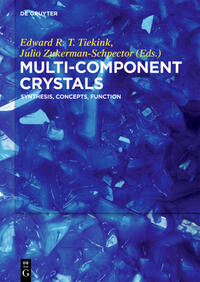
In this volume, contributions covering the theoretical and practical aspects of multicomponent crystals provide a timely and contemporary overview of the state-of-the art of this vital aspect of crystal engineering/materials science. With a solid foundation in fundamentals, multi-component crystals can be formed, for example, to enhance pharmaceutical properties of drugs, for the specific control of optical responses to external stimuli and to assemble molecules to allow chemical reactions that are generally intractable following conventional methods. ContentsPharmaceutical co-crystals: crystal engineering and applicationsPharmaceutical multi-component crystals: improving the efficacy of anti-tuberculous agentsQualitative and quantitative crystal engineering of multi-functional co-crystalsControl of photochromism in N-salicylideneaniline by crystal engineeringQuinoline derivatives for multi-component crystals: principles and applicationsN-oxides in multi-component crystals and in bottom-up synthesis and applicationsMulti-component crystals and non-ambient conditionsCo-crystals for solid-state reactivity and thermal expansionSolution co-crystallisation and its applicationsThe salt-co-crystal continuum in halogen-bonded systemsLarge horizontal displacements of benzene-benzene stacking interactions in co-crystalsSimultaneous halogen and hydrogen bonding to carbonyl and thiocarbonylfunctionalityCrystal chemistry of the isomeric N,N’-bis(pyridin-n-ylmethyl)-ethanediamides, n = 2, 3 or 4Solute・solvent interactions mediated by main group element (lone-pair)・・・π(aryl) interactions